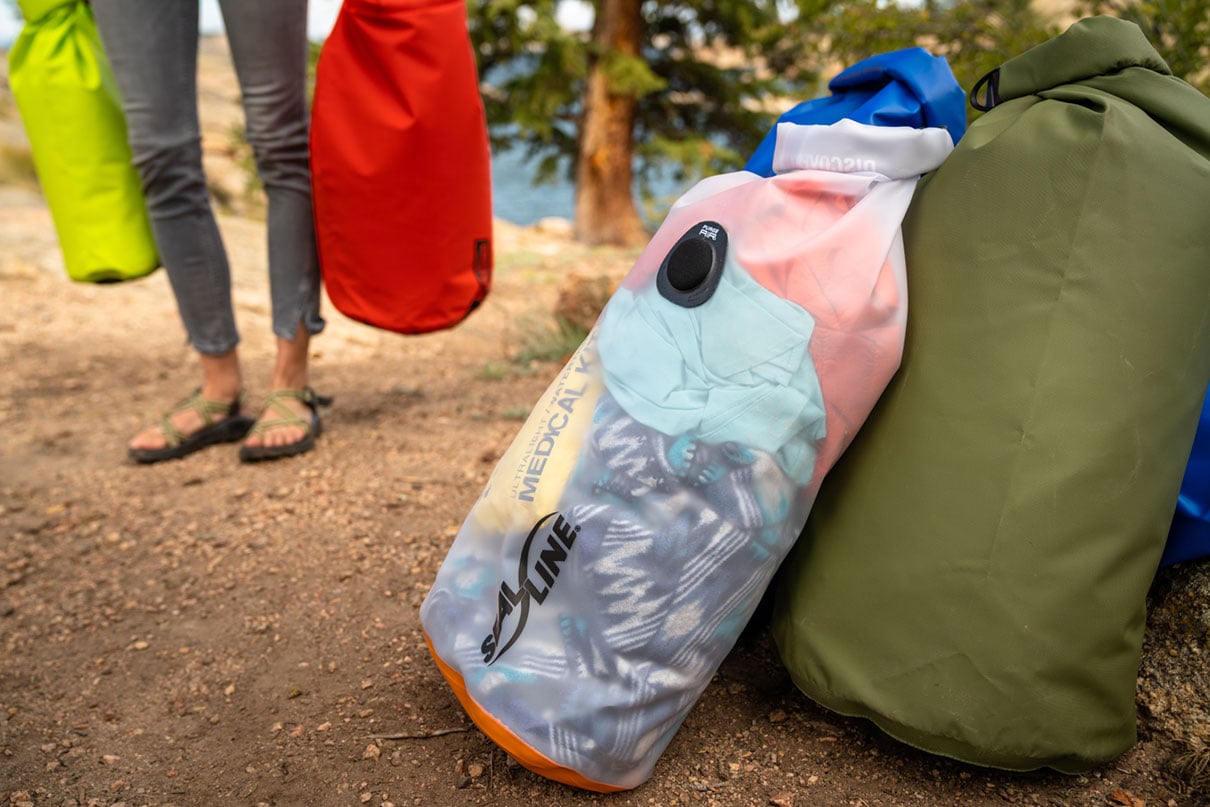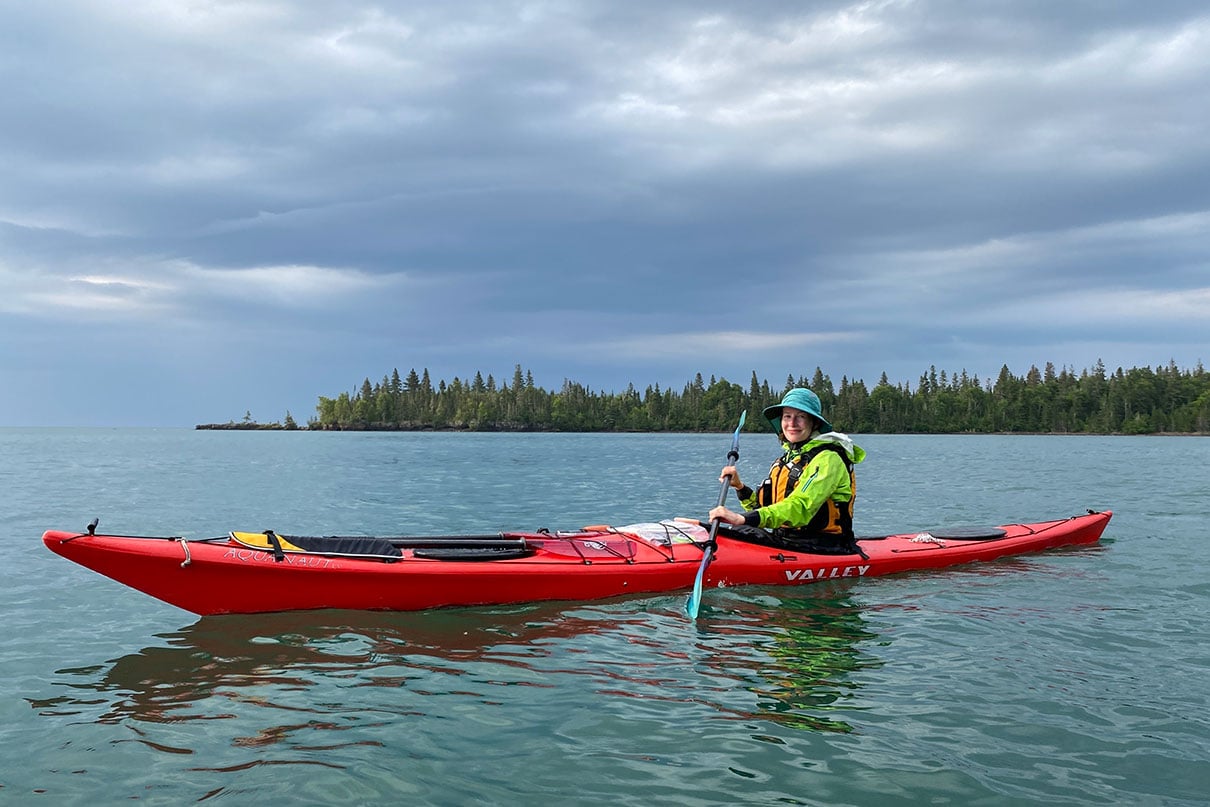Paddling in the dark is like entering a new world. On a moonlit lake, a familiar route becomes exotic. The sounds of the bow cutting through the water and droplets off a paddle are accentuated. And when there’s no moon and clear skies, stargazing from the water can be out of this world. Plus, natural phenomena like the aurora borealis or kayaking among bioluminescence are only visible at night. There are plenty of reasons to get on the water between dusk and dawn, so here’s what you need to know to kayak at night safely and legally.
Know The Risks
Let’s be real. Paddling at night has all the inherent dangers of daytime paddling and then some. Not the least of which is it can take longer to mount a response and locate a distressed paddler in an emergency. Adopt a common-sense risk management strategy based on the conditions. All the regular dos and do nots of paddling apply—wear your PFD, leave a float plan with a trusted friend, and check the weather before you paddle. Consider modifying your usual on-water behavior by sticking closer to shore and paddling at night only with a buddy.
Don’t paddle at night or in limited visibility in water navigated by powerboats or sailboats, unless experienced in night navigation lights and signals.
Light It Up
The specific legalities of paddling at night differ based on region, so it’s best to double-check with local guidelines. Both Transport Canada and the United States Coast Guard consider kayaks and canoes to be “vessels under oars.” This means paddlers are required to carry “an electric torch or lighted lantern showing a white light which shall be exhibited in sufficient time to prevent collision” on the water between sunset and sunrise.
This torch could be the same dinky waterproof flashlight included in many commercially sold bailer bucket kits. But if you’re regularly on the water between sunset and sunrise, you’ll want something suited to seeing and being seen. If paddling in an area without motorized vessels, opt for a handheld, waterproof, 360-degree light tethered within reach. Some paddlers prefer a waterproof headlamp; however, these tend to “blind” companions and are cumbersome if you should need to signal behind you.
Whatever light source you choose, remember that a light placed in your line of sight or reflected into your eyes—from a headlamp reflecting off the shiny deck of your kayak, for example—will impair your night vision.
Some states, like Texas, require a kayak light be visible at all times after dark, but most don’t, allowing you the option to paddle by the moon and starlight. Double-check your local regulations.

If sharing the water with motorboats, you need to get lit up. Kayaks are so low to the water motorboats may overlook them, and a kayak’s small light can easily be mistaken for a light onshore or far away. The best way to ensure visibility to boaters is to mount an elevated white light on the aft deck. Ideally, the light should shine continuously in 360 degrees and be unobstructed by the kayaker or seat. If you don’t do much paddling at night, use a suction cup mount instead of affixing the mount to the deck. In addition to this mounted light, a kayaker should still have a secondary handheld, waterproof light in case forward visibility is needed and for signaling. Paddlers sharing the water with motorboats must paddle defensively.
Red and green lights—called sidelights—on the bow can provide some visibility upfront without affecting a paddler’s vision but are not required on kayaks by either the Canadian or American coast guards. There are a series of specific coast guard regulations for installing sidelights a paddler needs to follow if she chooses to use them. Other lighting configurations might look cool but are not officially coast guard approved.
Sending Out An SOS
For added safety, night paddlers should also wear an emergency light, typically a small 360-degree, battery-powered LED light that can be seen more than one nautical mile away and can strobe to signal rescue crews in case of an emergency. This 360-degree light can be attached to your PFD’s shoulder strap so it’s always with you. Some newer models are automatically triggered when submerged in water. Of course, you could be floating for a while unless able to alert someone to your predicament with a phone or satellite communications device. An emergency light is just one part of a safety system.
Dress The Part
As with any kayaking mission, what you wear depends on the air and water temperatures where you’re paddling. If you wear a wetsuit or drysuit during the day, the night isn’t any different. Layering is always essential, and it’s a good idea to take one more layer with you at night than you would in the day. Stuff it in a drybag, and if you need it, you’ll be glad to have it.
Where To Go
The best place to kayak at night is a small lake or lazy river you’re familiar with. Choose a route you’ve paddled a handful of times during the day, so you know the landmarks, duration of the paddle and any hazards or alternate routes that could turn you around. Consider big trees, marinas, cliffs, large buildings or lighthouses as landmarks on your journey, but keep in mind some familiar sights may be unrecognizable by night.
On larger lakes, be especially aware of incoming weather and wind and the possibility of getting lost. If paddling a loop, it’s best to launch from a marina or other brightly lit location. On a wilderness lake, rather than leaving an unattended campfire, place a bright lantern on shore to guide you home.
You can use a phone or GPS device for nighttime navigation, but having an analog form of navigation as your primary navigation source is preferable. And knowing the area like the back of your hand is best.
This article was first published in Paddling Magazine Issue 62. Subscribe to Paddling Magazine’s print and digital editions here, or browse the archives here.
Welcome to the dark side. | Feature photo: Paul Zizka











I spent my life thinking I had to be back on shore by the time sunset came around. And then one day I realized I prefer paddling at night in the dark. A single White light, that’s all you need in Florida, in addition to your regular safety gear. Please don’t use red or green light. I don’t want boaters to think you are a channel marker. ️
If you decided to configure your kayak with running lights such as red/green bow side lights and other lights that conform to the USCG regulations understand that other vessels see this official pattern and may assume you know and practice all the Rules of the Road knowing what these light patterns suggest for direction of motion – and accordingly presuming they know the light pattern’s meaning, too. Don’t just be a floating chandelier all lit up without know what message you may – or may not – be sending.